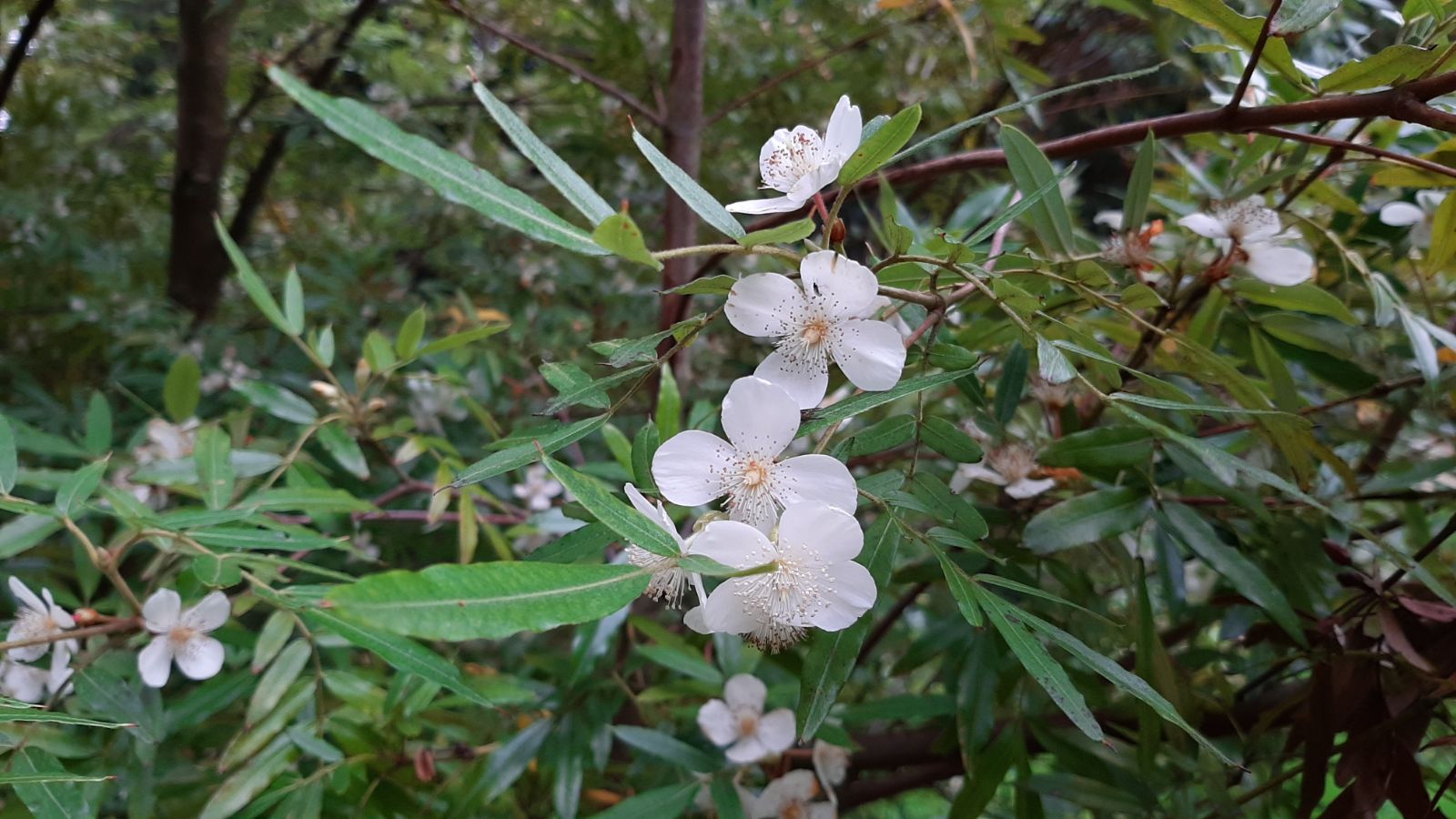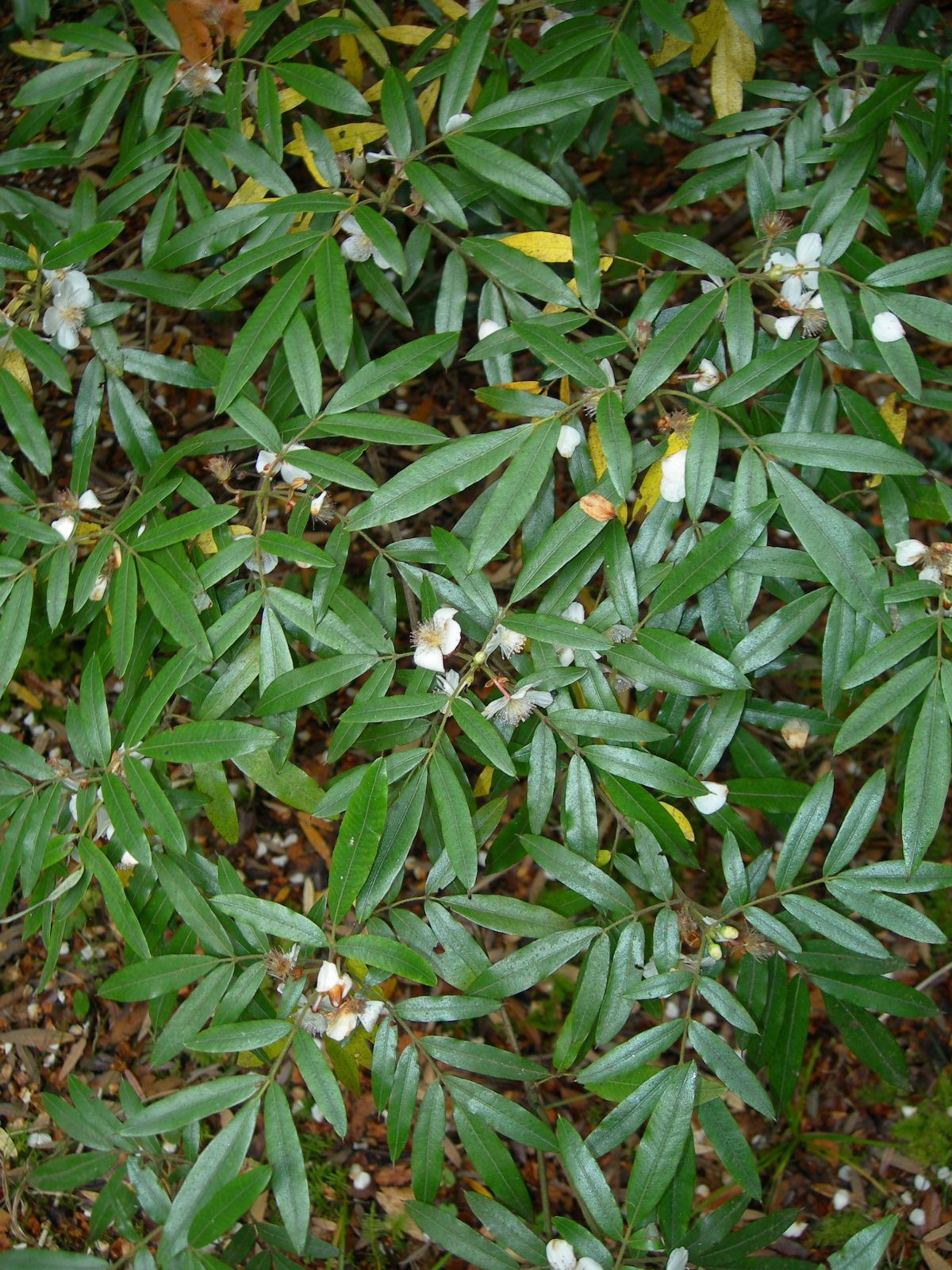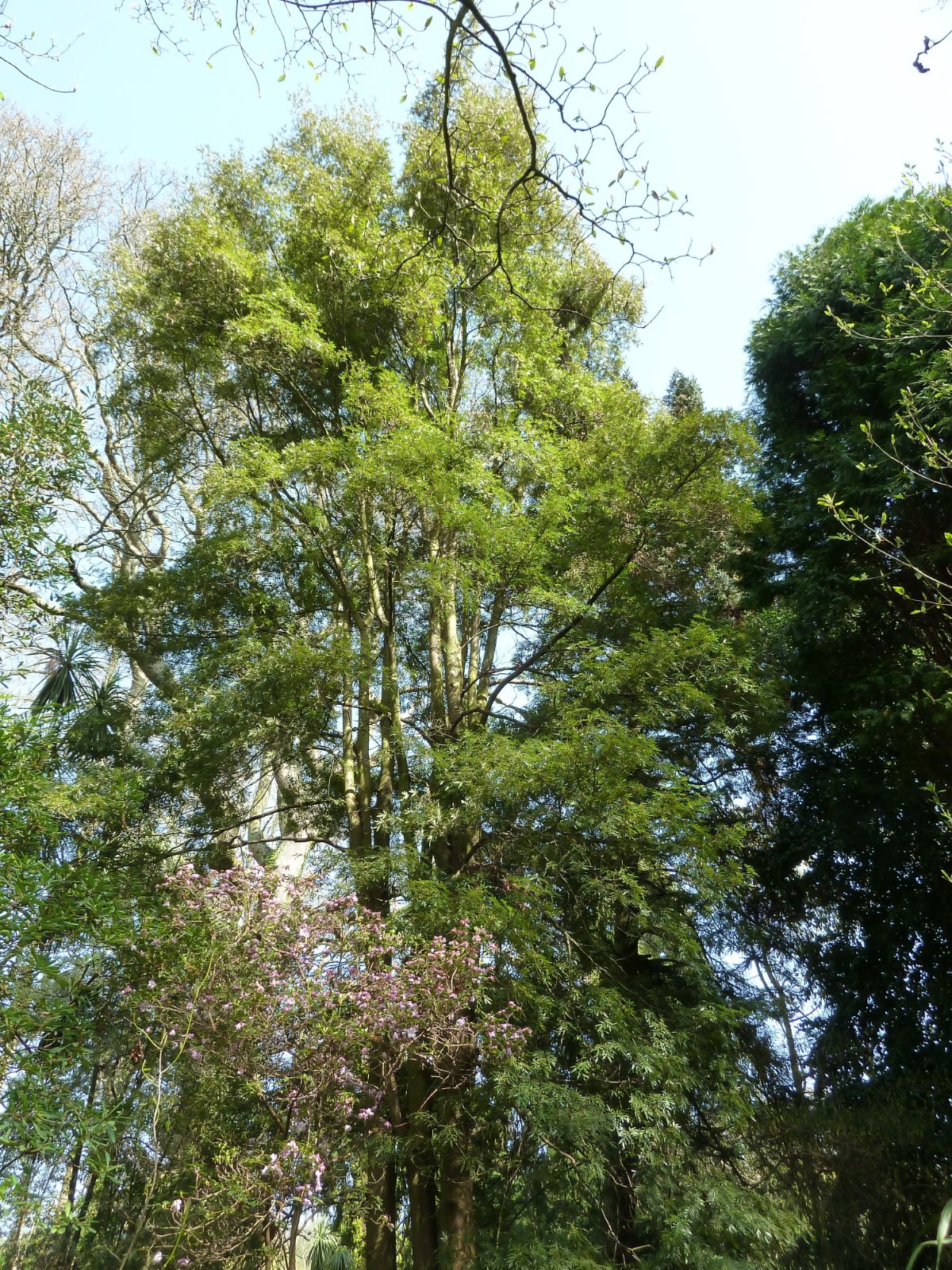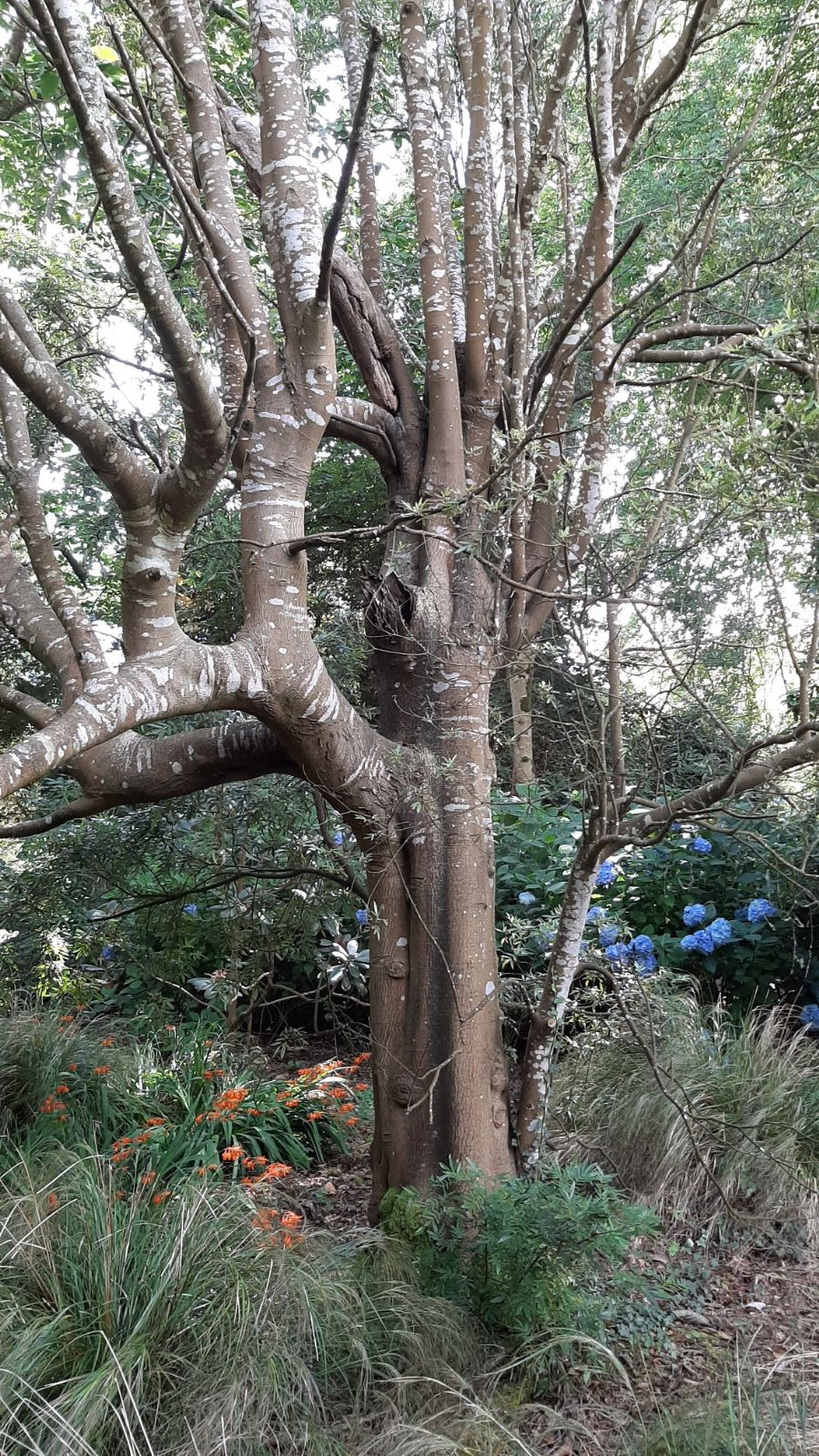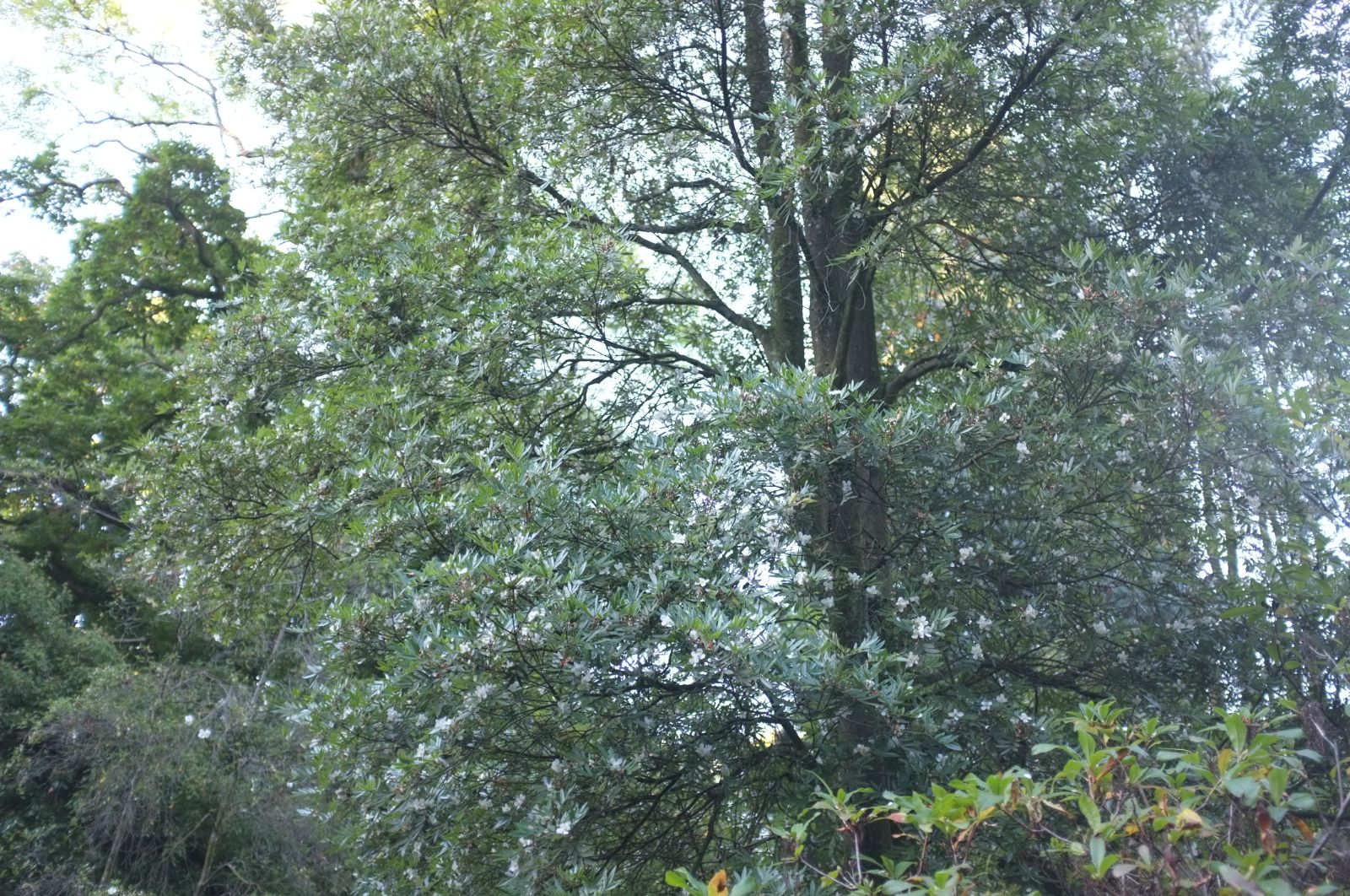Eucryphia moorei
Sponsor
Kindly sponsored by
William & Griselda Kerr
Credits
Tom Christian (2021)
Recommended citation
Christian, T. (2021), 'Eucryphia moorei' from the website Trees and Shrubs Online (treesandshrubsonline.
Genus
Common Names
- Plumwood
Evergreen tree to 40 m in its native habitat. Young shoots and branchlets densely pubescent, apical buds shining, glutinous. Compound leaves to 15 cm long with (1–)2–5(–7) pairs of lateral leaflets (often only one pair plus the terminal on flowering branches). Petioles to 1.7 cm long. Petioles and rachis densely villose-pubescent. Rachis internodes 0.5–2 cm long. Leaflets with entire margins, upper surface dark green and glabrous, lower surface pale or glaucous, tomentose, more or less sessile, apices mucronate-apiculate. Lateral leaflets narrowly oblong, 1–7 × 0.5–1.5 cm. The basal pair of lateral leaflets is always the shortest, leaflets increase in length toward the terminal leaflet which is always the largest. Flowers 2–3 cm across, solitary, borne from the leaf axils on stalks up to 3 cm long. Capsule ovoid-oblong, 0.8–1.5 cm long, pubescent. (Bausch 1938; Cullen et al. 2011; Wallace 2015).
Distribution Australia Coastal ranges of New South Wales and Victoria
Habitat Temperate rainforest
USDA Hardiness Zone 8b-11
RHS Hardiness Rating H4
Conservation status Not evaluated (NE)
Native to southeastern New South Wales and adjacent Victoria, Australia, where it is a component of warm-temperate rainforest at lower elevations and often a dominant species in the cool-temperate rainforests of higher elevations. It was described in about 1863–1864 by Ferdinand von Mueller, then director of the Royal Botanic Gardens, Melbourne, after having been discovered by Charles Moore, who was himself director of the Royal Botanic Garden, Sydney (Wallace 2015).
Eucryphia moorei was introduced to RBG Kew in 1915 – a surprising delay – presumably from RBG Sydney, flowering for the first time in the temperate house in 1921 (Bean 1981). It was later tested outdoors and found to grow well in the very mild gardens of the western fringes of Britain, and around the coasts of Ireland, for example at Glenveagh Castle, County Donegal, Ilnacullin, County Cork, and Mount Usher, County Wicklow, where the tallest example in the UK and Ireland stands at 21 m × 53 cm dbh in 2015. Others may be found in such gardens as Inverewe in northwest Scotland, Muncaster Castle in Cumbria, the Clyne Gardens in Swansea, Wales, and at Greenway, Devon (The Tree Register 2018). While reasonably hardy in mild localities such as these it can still be killed by exposure to excessive cold – E. moorei did not survive the very cold winter of 2010–2011 at RHS Garden Rosemoor in Devon where the temperature dipped to –16°C (Horticulture Week 2011).
Bean went on to say that while E. moorei was ‘not so attractive in bloom as [E. glutinosa] … the foliage is handsome and the growth elegant’ (Bean 1981). Even if one was to differ on the first point, it would be all but impossible to disagree with the latter. The pinnate foliage with relatively narrow, elegant leaflets with mucronate tips is distinctive, and helps to separate E. moorei from its relatives including the hybrid E. × hillieri. It is surprising then, as with other eucyrphias, that E. moorei appears to be so rarely cultivated in warmer regions of Europe where it ought to grow very well and make a fine addition to ornamental landscapes, such as in the vicinty of the Italian Lakes. In preparing this account, barely a single mention of it growing in these areas could be found. It is at least cultivated in its native Australia, and in New Zealand, for example at the Eastwoodhill Arboretum near Gisborne (MacKay 1996) and at Dunedin Botanic Garden (Wikimedia Commons 2017). It is also cultivated on the west coast of North America, although being ‘the least hardy species’ (Cullen et al. 2011) it is relatively rare here.
Even before E. moorei was formally described to science settlers in Australia were cutting it to use its timber for construction and later cabinet making, and to clear land for settlement and agriculture. Felling of the forests where the species is indigenous continued for approximately 100 years until c. 1950, but nowadays the vast majority of the natural populations occur inside protected areas (Wallace 2015).
Recently, E. moorei was determined to be a parent of the mysterious E. ‘Madron’ when this hybrid was rediscovered at Trengwainton, Cornwall (Christian 2021). See E. × splendens for further discussion.

